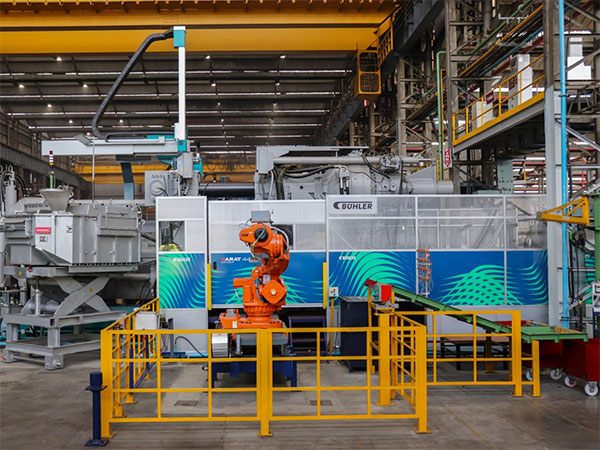Archaeological town from bronze age discovered at Khaybar Oasis, Saudi Arabia
Nov 03, 2024
Riyadh [Saudi Arabia], November 3: The Royal Commission for AlUla (RCU) announced that archaeologists discovered a Bronze Age town in the Khaybar Oasis, located in the northwest of the Kingdom of Saudi Arabia, a discovery published in the scientific journal PLOS ONE.
The announcement was made today at a press conference held by RCU in the Saudi Press Agency conference center in Riyadh. The conference highlighted the significance of this discovery to the Kingdom's standing in the field of antiquities, as well as on its cultural richness.
The discovery is proof of the Kingdom's commitment to safeguarding its cultural and historical heritage, as well as its desire to exchange knowledge and experience with the international community, and promote awareness about the common human heritage, consistent with the goals of the Kingdom's Vision 2030.
It also underscores the need to strengthen international partnerships, to present such rich heritage to future generations, globally.
The transition from a mobile pastoral life to a settled urban life in the region during the second half of the third millennium BC is illustrated by the discovery, which was made in the framework of the Khaybar Longue Duree Archaeological Project, led by Dr. Guillaume Charloux, researcher at the French National Centre for Scientific Research, and Dr. Munirah AlMushawh, archaeological survey manager at RCU.
This change in paradigm challenges the previous notion that pastoral and nomadic society was the dominant socio-economic model in northwestern Arabia during the early and middle Bronze Age.
The research points out that regions such as Khaybar were significant urban centers that permanently maintained the stability of their communities, particularly with the introduction of agriculture. They also served as centers of trade and commerce for nomadic communities. The emergence of this urban design significantly influences the socio-economic paradigm of the region.
In the Bronze Age, the northwestern Arabian Peninsula was home to a significant number of nomadic pastoral communities, but the region also had a number of walled oases that were connected to one another and were located around fortified cities like Tayma.
The discovered town, called Al-Natah, provides evidence of a clear division, within forts and cities, of residential and funerary areas. The site encompassed an area of 2.6 hectares, was inhabited by 500 individuals between 2400 and 2000 BC until 1500 and 1300 BC. The Khaybar Oasis was surrounded by a 15-km-long stone wall to ensure its protection.
The study was conducted by the Royal Commission for AlUla in collaboration with the French Agency for the Development of AlUla (AFALULA) and the French National Centre for Scientific Research (CNRS).
Khaybar Oasis, located on the edge of the Harrat Khaybar volcanic field, formed at the meeting point of three valleys in a highly arid area. The remains of the town were discovered on the northern edge of the oasis, buried beneath layers of basalt rock for thousands of years.
Source: Times of Oman








